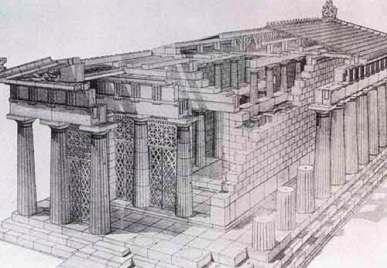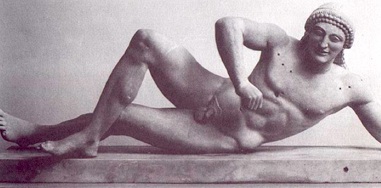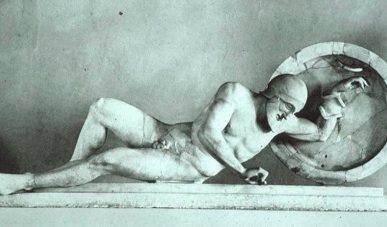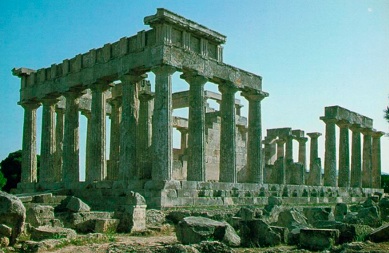BACKGROUND
The Temple of Aphaia on the island of Aegina, dating to the end of the Archaic period, circa 500 BCE, represents the completion of the setting down of the basic tenets of the Doric order of Greek architecture (Biers, p. 157). It was built of limestone after the previous temple on the site, made of wood and constructed circa 570 BCE, burned down around 510 BCE. The temple is dedicated to a local goddess.
MEASUREMENTS
The temple measures 28.8 by 13.7 meters along the stylobate. The height of its columns is 5.33 times greater than their width at the base, giving the temple an elongated, airy feel. There were six columns along the short edges and 12 along the sides (Biers, p. 157).
CONSTRUCTION OF THE TEMPLE
The Temple of Aphaia on Aegina made use of new construction technologies. Previously, temples had been constructed chiefly through the use of ramps and levers. With the invention of the pulley, however, it was possible to construct temples from smaller blocks of stone hoisted into place. This new technology is reflected in the columns of the temple. Some of them are traditional, one-piece columns probably levered into place. Others, however, are composed of column drums, lifted into place through the use of pulleys (Whitley, p. 224).

A cut-away view of the temple
THE PEDIMENTS
The pediments of the Temple of Aphaia on Aegina are the temple’s most interesting features. Pieces of three sculptural sets have been preserved, and together they show how the temple straddles the divide between the archaic and classical periods. Both pediments were lavishly decorated, filled to the edges with carefully planned sculptural scenes. The execution of each side, however, differs greatly from that of the other. On the west pediment is the archaic sculpture, shown here by the warrior without a shield. Although he lies at the right corner of the pediment, his feet point inwards, opposite from how they would lie if following the pediment’s outline, demonstrating the failure of the archaic designer of this plan to fully comprehend the best way to fill the triangular space of the pediment. This soldier wears the archaic smile, and his hair is styled in carefully sculpted, unnatural rings.

The Archaic pediment
The original sculptures from the east pediment were damaged, and replaced sometime in the fifth century. The fifth century replacement constitutes the majority of the remains available today from the east side of the temple. The years separating the creation of the east and west pediments are clearly evident, and can be easily seen by comparing the soldier with a shield, from the east pediment, to his shield-less counterpart from the west. Here we see primitive attempts to sculpt realistic expression, and a body that is more rounded, lifelike, and naturalistic. The sculpture of the east pediment comes from the Early Classical Period (Biers, p.s 176-177).

The Early Classical Pediment
OTHER INTERESTING OR UNUSUAL FEATURES
A terrace wall (temenos) was constructed at this temple to delineate its sacred space. Inside the temple itself, there was one of the first double-stacked colonnades, which eventually became a typical feature of Doric temples. There was a small room behind the cella, formed by the closing off of the opisthodomos with grilles, which may have been used for cult practices. This temple is the only known site of worship for the goddess Aphaia.
THE PLUNDERING OF THE TEMPLE
The Temple of Aphaia on Aegina was plundered for Ludwig I, and many of its fallen sculptural adornments brought to Munich by C.R. Cockerell, an antiquarian traveling in Greece in 1811-12. Cockerell and others went to Greece following Lord Elgin’s acquisition of the Parthenon marbles (Whitley, p. 27). The temple’s sculptures remain in Munich today, at Staatliche Antikensammlungen und Glyptothek.

The temple as it stands today
Return to Glossary of Key Terms
